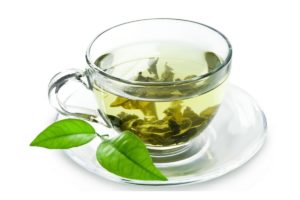The Properties of White Tea: Dietary and Health Benefits
Whether it is green tea, Oolong tea, Pu-erh tea, or white tea, each of these teas has been traditionally known to have unique beneficial health properties. As more and more scientific research is conducted into these effects, it is becoming clear that these teas may possess numerous properties that make them beneficial to human health.
This report will take a detailed look at the known health and dietary benefits that are associated with white tea; it will also discuss the concept of synergy, whereby the effectiveness of different teas are combined together to maximize the full potential benefits.
Introduction
White tea has been traditionally produced in Fujian province on the south-east coast of China. While all the other types of tea produced from the tea plant (Camellia Sinensis) are brewed from tea leaves, white tea is produced from the leaves as well as buds of the plant.
In fact, the tea has acquired its name from the silvery downy hairs on the buds of the tea plant. Selection of white tea leaves is very stringent as only small and young leaves are suitable for the tea.
White tea is very lightly oxidized, and the buds and leaves are allowed to wither in natural sunlight before light steaming. Further processing is avoided in order to prevent more oxidization of the tea.
The Known Health Benefits of White Tea
Being derived from the tea plant (Camellia Sinensis), green tea, Oolong tea, Pu-erh tea and white tea all share similar chemical properties and make up, and therefore similar health effects.
For instance, white tea also contains a high amount of polyphenols, which are plant based anti-oxidants. Several studies have shown that polyphenols are responsible for a number of important health benefits.
These anti-oxidants are linked to a reduction in the level of cholesterol. Catechins which are anti-oxidants belonging to this category are known to keep arteries healthy by preventing the build-up of plaque on the endothelial lining of arteries.
Polyphenols have been linked to reducing cholesterol, keeping the circulatory system healthy and improving circulation. This helps in keeping blood pressure down and improving cardio vascular health.
Polyphenols attack harmful free radicals in the body and studies have found a link between these anti-oxidants and anti-cancer action. A 2010 study links white tea extract consumption with suppressive action on cancer cells.
White tea is also found to inhibit the growth of bacterial infections.
A study conducted in 2004 at Pace University, New York, found that white tea extract may have prophylactic applications as it was found to have anti-bacterial properties that retarded the growth of streptococcus infections, staphylococcus infections, pneumonia as well as dental infections. It was also found to have anti-fungal and anti-viral properties. White tea extract was found to totally inactivate Saccharomyces cerevisiae yeast cells and Penicillium spores. The study concluded that the anti-fungal and anti-bacterial properties of white tea may be greater than green tea.
Studies have also found that polyphenols present in white tea may boost immunity by increasing the level of regulatory T cells in the body.
Studies have also shown that these anti-oxidants can have anti-ageing action, by keeping connective tissue healthy and maintaining the health of skin and eyes. Indeed, in China tea has been known to be an agent of youth and health.
A study undertaken in 2009 at Kingston University, London, found that white tea consumption could lower the risk of rheumatoid arthritis, certain cancers, as well as heart disease due to its strong anti-inflammatory and anti-oxidant properties and its ability to keep connective tissue healthy.
The study also found that white tea prevented or slowed down the breakdown of collagen and elastin caused by enzymes, resulting in anti-ageing effects.
How Might the Tea Aid with Weight Loss?

Only in KouTea™ You will find a special blend of 4 the most potent, proven Teas!
Obesity is a growing concern today, especially in post industrialized nations. The rising incidence of obesity and related conditions such as cardio vascular problems and diabetes has made the issue very relevant.
The potential effects of white tea on fat storage and weight gain have attracted the interest of scientists worldwide. Several studies have and are being conducted on these effects in order to understand the full extent to which white tea may aid in weight loss, and the results do look very promising.
White tea has been found to aid weight loss in various ways. Polyphenols present in white tea help lower the levels of cholesterol in the blood, as well as improve the circulatory system. A healthy heart is the first step to maintaining healthy weight through good diet and regular exercise.
White tea may also prevent the storage of fat in the body, and help metabolize fat quicker. It is also found that white tea can suppress appetite, making it easier to follow a healthy diet.
White Tea Suppresses Growth of Fat Cells
A 2008 study conducted on the effect of white tea extract on human fat cells showed that white tea extract caused the breakdown of existing fat cells and inhibited the growth of new fat cells. It was found that white tea suppressed or decreased the expression of genes associated with the creation of new adipocytes. The study concluded that white tea extract is a potent and natural source that can inhibit adipogenesis – which is the conversion of pre fat cells into fat cells, and stimulate lipolysis – which is the breakdown of fats for utilization by the body for energy.
The study by a German health food company in 2009 found that Chinese white tea reduces growth of new fat cells and broke down the fat contained in existing cells.
Helps Burn Calories Quicker
White tea contains caffeine and is a naturally thermogenic substance. This means that it helps speed up the metabolism. By boosting metabolism, white tea can help increase the rate at which stored fat is burnt.
While white tea speeds up the metabolic breakdown of calories, it does not contain any calories, making it effective in weight loss. Also, unlike other teas which also contain caffeine, white tea contains a very small amount, making it free from the unpleasant side effects of caffeine consumption.
Suppresses Appetite
White tea is known to dull the appetite, making it easier to refrain from snacking between meals. This can make it much easier to stick to a healthy weight loss diet.
Using Tea in Synergy
While all teas derived from the Camellia Sinensis (tea) plant have the same basic components and nutrients, each tea also has its own character, developed due to the way the tea is produced and processed. Even within white tea, for instance, the amount of polyphenols can vary based on the processing, the strain of the tea plant etc.
Green tea, Oolong tea, Pu-erh tea and white tea all have their own strengths and weaknesses when it comes to weight loss. However, several studies have shown that all these types of tea can be effective in combating weight gain and obesity.
For instance, while green tea has been shown to be particularly effective in reducing the amount of fat stored in the body, Pu-erh tea has properties that impact the digestive system and improve the efficiency of digesting tough fats. White tea has been shown to suppress the growth of new fat cells and help the breakdown of existing fats.
Thus using different types of tea together in the right combinations can help create an effective weight loss regime that heightens the benefits of each tea, while overcoming any weaknesses. This can be done by consuming a blend of teas designed specially to heighten the weight loss effects of each tea, or by taking a health supplement consisting of the right blend of tea extracts.
Side Effects of White Tea
White tea is a completely natural substance, as it has been derived from the tea plant and minimally processed. It contains a very small amount of caffeine, so there are known to be no real side effects for white tea. However, in order to avoid adverse interaction with any existing medication, it is important to seek medical advice before taking any health supplements and products made from concentrated white tea extract.
Summary
White tea is a minimally processed tea traditionally produced in the south-east of China. Being derived from the tea plant, white tea shares many of its health benefits with other teas such as Oolong and green tea.
The polyphenols present in white tea are beneficial to health in a number of ways. They can help keep the circulatory system healthy and improve cardio vascular health. Studies show that they also play a preventative role in heart disease and other cardio vascular conditions such as stroke. Polyphenols have the ability to lower bad LDL cholesterol, and prevent the build-up of plaque on the lining of arteries.
These anti-oxidants are also linked to anti-ageing action. A 2009 study found that white tea is particularly effective in slowing down the enzymatic breakdown of elastin and collagen, resulting in anti-ageing action.
In the light of the global obesity epidemic, white tea has become especially interesting to researchers owing to its potential benefits for weight loss.
A 2008 study showed that white tea may have an anti-obesity effect on human fat cells. The study found that white tea has the ability to suppress the expression of genes that cause the generation of new fat cells. Not only this, white tea also brings about the breakdown of existing fat cells.
By speeding up metabolism, white tea can help increase the rate of fat oxidation. It also has an effect of suppressing hunger, making it a very effective component of any weight loss regime.
Although different teas derived from the Camellia Sinensis plant have similar base properties, each tea also seems to have its own unique properties as well. For instance, while white tea is found to cause the breakdown of fats, Pu-erh tea is found to have a degreasing effect and help in getting rid of certain types of fat.
Consuming different teas together as part of a regime can be the most effective way to use them in weight loss. This concept is known as synergy, where different teas can be used together to overcome any individual weaknesses and maximize their strengths.
Copywrite
This is an open access article distributed under the Creative Commons Attribution License, which permits unrestricted use, distribution, and reproduction in any medium, provided the original work is properly cited.
References & External links
- Hilal, Y., and U. Engelhardt. “Characterisation of white tea–Comparison to green and black tea.” Journal für Verbraucherschutz und Lebensmittelsicherheit 2.4 (2007): 414-421. “An overview is given on the manufacture of the different types of tea along with the most important phenolics present in tea and methods of analysis. Compositional data are presented for green, white and black teas.“
- Gondoin, Anais, et al. “White and green tea polyphenols inhibit pancreatic lipase in vitro.” Food Research International 43.5 (2010): 1537-1544. “Green, white and black teas were assayed for inhibition of pancreatic lipase activity in vitro. White tea proved to be more effective than green tea with black tea showing little inhibition even at 200 μg GAE/ml. … White tea had higher levels of 5-galloyl quinic acid, digalloyl glucose, trigalloyl glucose and the tannin, strictinin.”
- Söhle, Jörn, et al. “White Tea extract induces lipolytic activity and inhibits adipogenesis in human subcutaneous (pre)-adipocytes.” Nutrition & metabolism 6.1 (2009): 1. “White Tea extract is a natural source that effectively inhibits adipogenesis and stimulates lipolysis-activity. Therefore, it can be utilized to modulate different levels of the adipocyte life cycle.“
- Carloni, Patricia, et al. “Antioxidant activity of white, green and black tea obtained from the same tea cultivar.” Food research international 53.2 (2013): 900-908. “The results contribute to better understand how the manufacturing process influences the antioxidant activity of tea when variables (geographical region, environmental conditions, cultivar type, plucking techniques) are kept to a minimum. Secondly, we show that novel African green, white and black Orthodox teas, made from tea varieties typically used in black CTC tea production, may have potential health benefits comparable with commonly consumed teas.“
- Dias, T. R., et al. “White tea (Camellia sinensis (L.)): antioxidant properties and beneficial health effects.” Int J Food Sci Nutr Diet 2.2 (2013): 19-26. “White tea (WT), the least processed tea, is one of the less studied and is ascribed to have the highest content of phenolic compounds. Tea polyphenols, especially catechin derivatives, are potent antioxidant agents, with positive effects on human health. Antioxidant components have aroused great interest because of their ability to scavenge free radicals, thereby inhibiting OS. During the past years, oxidative damage induced by reactive species has been linked to the development of several human diseases such as CVD,DM, neurodegenerative disorders and certain types of cancer.“
- Tenore, Gian Carlo, et al. “In vitro hypoglycaemic and hypolipidemic potential of white tea polyphenols.” Food chemistry 141.3 (2013): 2379-2384. “The leaves at different processing stages of a single tea cultivar in order to obtain white (WT), green (GT) and black tea (BT) samples, were analysed. The capacities of tea polyphenolics to influence the glucose and lipid metabolism in HepG2 cell lines were evaluated. Polyphenolic extracts from white, green and black tea were tested on HepG2 cells. White tea: was the most effective in reducing glucose and cholesterol uptake; showed the best activity in enhancing LDL receptor binding activity; led to the highest increase in HDL cell medium concentration; proved the best inhibition capacity against triacylglycerol hydrolase activity.“






